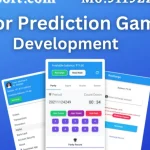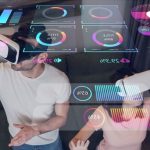
In the ever-expanding realm of digital entertainment, an unexpected contender has emerged in the form of color prediction games. Beyond their reputation for providing engaging experiences and financial incentives, these games are increasingly being recognized for their potential therapeutic benefits in promoting mental wellness. This article explores the unique intersection between color prediction games and mental health, shedding light on the therapeutic aspects that make these platforms more than just a source of entertainment.
Stress Reduction and Mindful Engagement:
Color prediction games on 91club.in, with their simple mechanics and visually stimulating interfaces, offer a unique avenue for stress reduction. Engaging in these games requires a level of focus that can act as a mindful escape from the pressures of daily life. The process of predicting colors and experiencing the outcomes can create a sense of flow, fostering relaxation and a temporary reprieve from stressors.
Cognitive Stimulation and Mental Agility:
Beyond the immediate relaxation effects, color prediction games contribute to cognitive stimulation and mental agility. The quick decision-making required in predicting colors, combined with the anticipation of outcomes, exercises cognitive functions. This mental engagement is akin to a workout for the brain, promoting neural connections and potentially contributing to improved cognitive abilities over time.
Sense of Accomplishment and Positive Reinforcement:
Color prediction games often incorporate reward systems, providing users with a sense of accomplishment upon successful predictions. This positive reinforcement mechanism can play a crucial role in boosting self-esteem and enhancing overall well-being. The satisfaction derived from making accurate predictions contributes to a positive feedback loop, creating a virtual environment that fosters a sense of achievement.
Distraction from Negative Thought Patterns:
For individuals dealing with stress, anxiety, or negative thought patterns, color prediction games can serve as a healthy distraction. By shifting focus to the interactive and visually appealing elements of the game, players can temporarily distance themselves from intrusive thoughts. This diversionary aspect can be particularly beneficial for those seeking a break from the challenges of mental health issues.
Community Connection and Social Support:
Many color prediction platforms incorporate community features, allowing users to connect with each other, share experiences, and engage in friendly competition. This sense of community and social support can be invaluable for individuals dealing with mental health challenges. The camaraderie and shared experiences within the gaming community create a supportive environment that transcends the virtual realm.
Integration into Mental Health Strategies:
Recognizing the potential therapeutic benefits, some mental health professionals are exploring the integration of color prediction games into mental health strategies. While not a substitute for professional interventions, these games can complement existing therapeutic approaches, providing individuals with an accessible and enjoyable tool for self-care and mental well-being.
Conclusion:
Color prediction games are emerging not only as sources of entertainment and financial engagement but also as unexpected allies in the pursuit of mental wellness. Their unique blend of stress reduction, cognitive stimulation, positive reinforcement, distraction, and community connection positions them as more than just digital pastimes. As the recognition of the therapeutic potential of these games grows, they may play an increasingly significant role in the broader landscape of mental health, offering users a novel and enjoyable approach to nurturing their mental well-being.



